The Origins
The Origins: What Books Capture the Attention of Filmmakers?
Not every story leaps from the page to the silver screen. In the vast ocean of literature, what makes a book the chosen one? Is it the heart-pounding twists of a detective thriller, the sprawling worlds of epic fantasy, or the emotional depths of a literary classic?
In this chapter, we dive into the DNA of Hollywood’s favorites. Using data and analysis, we’ll uncover the patterns and traits that separate a best-selling book from one destined for box office glory. Do page counts, ratings, and genres hold the key to cinematic success? Let’s find out.
The Perfect Length: Striking the Sweet Spot
When it comes to page count, less is often more. Filmmakers gravitate toward books with around 250 pages, a length that balances storytelling depth with adaptability for a screenplay. Think of “The Great Gatsby” (180 pages) or “The Catcher in the Rye” (277 pages)—short, sharp narratives that deliver big on character and plot.
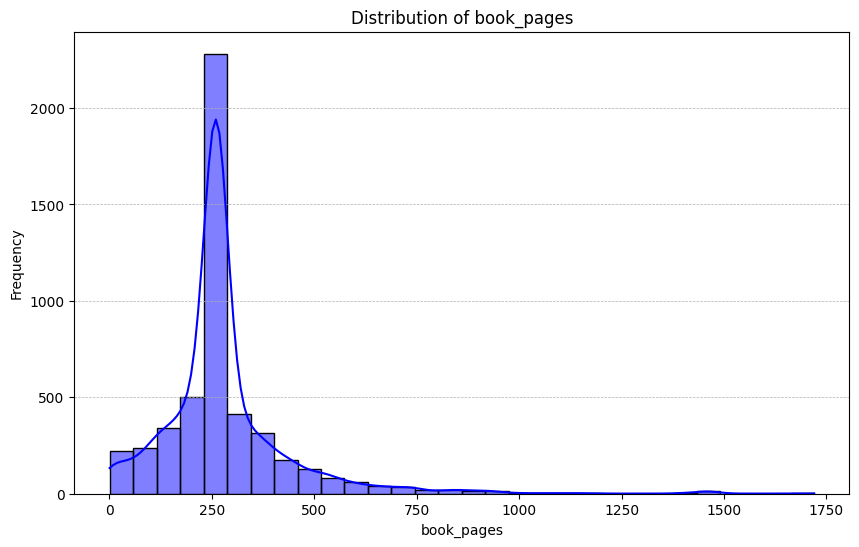
But here’s the twist: our t-test shows no significant difference between adapted and non-adapted books (p = 0.871). On average, adapted books are just 0.87 pages shorter than their non-adapted peers. This tells us that length alone isn’t the dealbreaker—it’s the substance within those pages that counts.
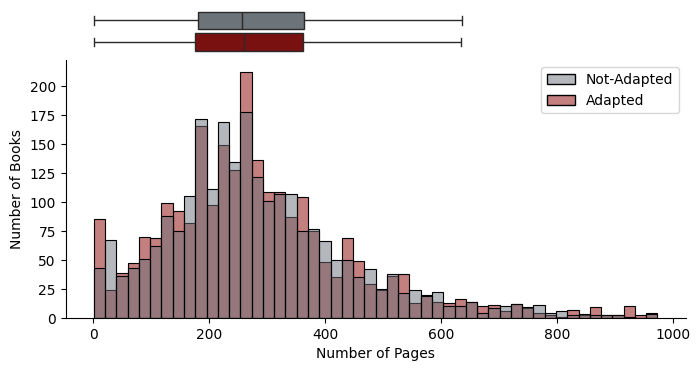
For epics like “The Lord of the Rings”, which run into the hundreds (or thousands) of pages, the sheer weight of storytelling often justifies their cinematic translation. The message? If the story is compelling enough, filmmakers are willing to take on even the longest reads.
Goodreads Ratings: Does Popularity Make the Cut?
When it comes to ratings, adapted books hold a slight edge, averaging 4.04 stars compared to 4.00 stars for non-adapted ones. While this difference is statistically significant (p = 2.1e-07), it’s surprisingly small—just 0.04 points.
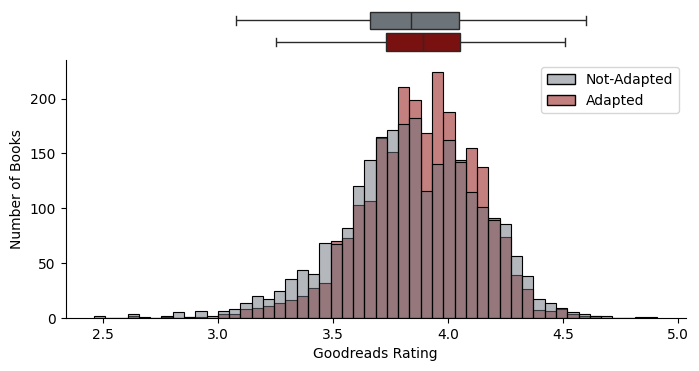
Unpacking the Feedback Loop:
Popularity metrics like Goodreads ratings are far from neutral. Adapted books often experience a feedback loop: when a book is adapted into a movie, it gains exposure, prompting viewers to read and rate the book. This process inflates the book’s perceived popularity post-adaptation.
For instance:
- “The Godfather” saw a surge in ratings and reviews after its cinematic success, creating a feedback cycle where its reputation as a literary and cinematic classic reinforces itself.
- Similarly, “The Hunger Games” became a global sensation following its adaptation, with readers flocking to the original trilogy after watching the films.
This feedback loop makes it challenging to separate a book’s original appeal from its movie-driven popularity. To account for this, our analysis focused on books published long before their adaptations, reducing the chances of inflated ratings from recent releases.
Genre Goldmines: Where Hollywood Finds Treasure
What’s the golden rule of adaptation? Hollywood loves a big, bold story. Unsurprisingly, genres like fantasy, science fiction, historical fiction, and detective mysteries dominate. These genres offer rich visuals, gripping plots, and built-in fanbases—perfect for the big screen.
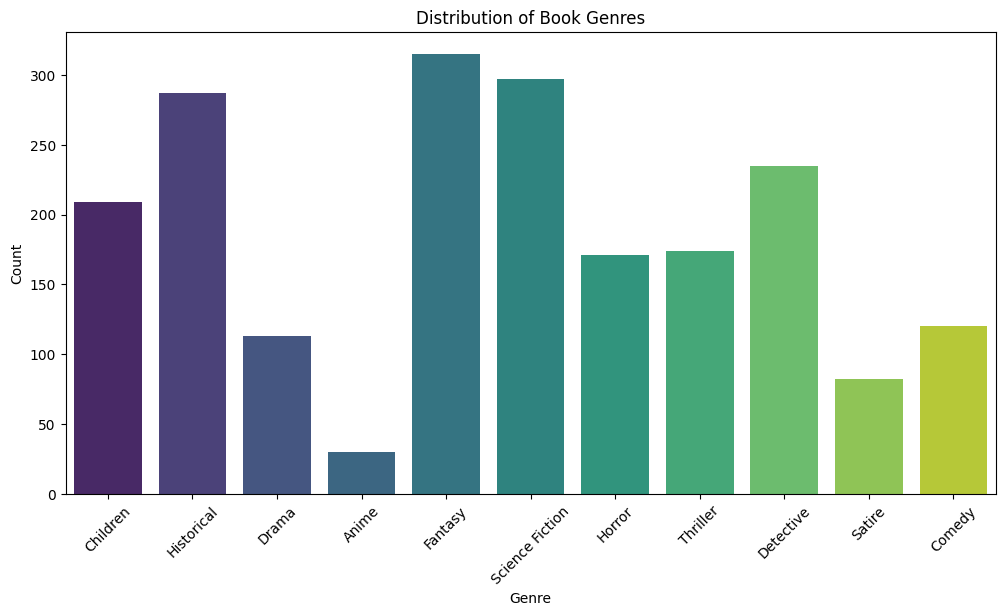
For example:
- The sprawling magic of “Harry Potter” has enchanted billions.
- The timeless allure of “Sherlock Holmes” continues to inspire countless adaptations.
Meanwhile, genres like satire and drama, which rely on subtler themes, tend to stay on the page. It seems Hollywood prefers stories that dazzle, not whisper.
Timeless Appeal: Classics Never Go Out of Style
Adapted books are often oldies but goodies, with an average publication date 40 years earlier than non-adapted ones (p = 0.000). Hollywood executives tend to favor works that have already proven their cultural staying power, like “Pride and Prejudice”, which has charmed readers and viewers for centuries.
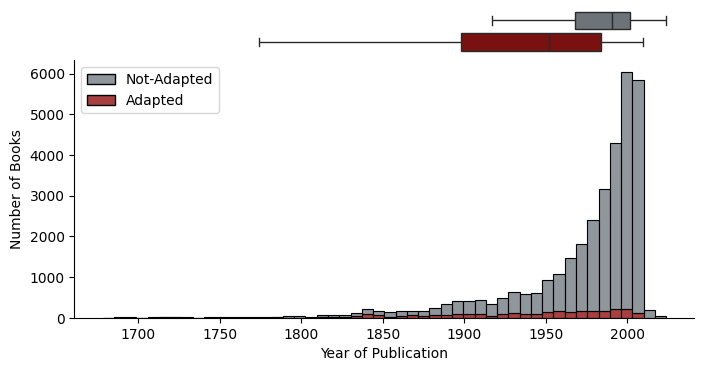
But here’s an important caveat: our dataset only includes books up to 2010, so newer works may still be waiting for their big-screen break. Additionally, adaptations face a natural lag:
- Development timelines: Even if a book is a hit, turning it into a movie takes years.
- The democratization of publishing: Since the 1990s, more books have hit the market than ever before, making it harder for individual works to stand out.
Books from 2000-2010 could still be in the adaptation pipeline, waiting for the perfect moment to shine.
Popularity and Awards: The Hollywood Seal of Approval
When it comes to sheer numbers, adapted books blow their non-adapted counterparts out of the water, boasting 148,448 more Goodreads ratings on average (p = 0.000).
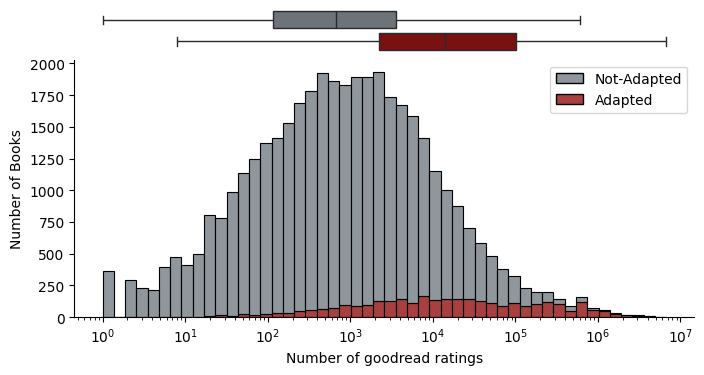
Beyond the Numbers:
It’s not just ratings that matter—it’s recognition. Adapted books are more likely to have won prestigious awards like the Pulitzer Prize or the Booker Prize. These accolades act as a stamp of approval, signaling quality and cultural relevance. For filmmakers, this translates to a safer bet at the box office.
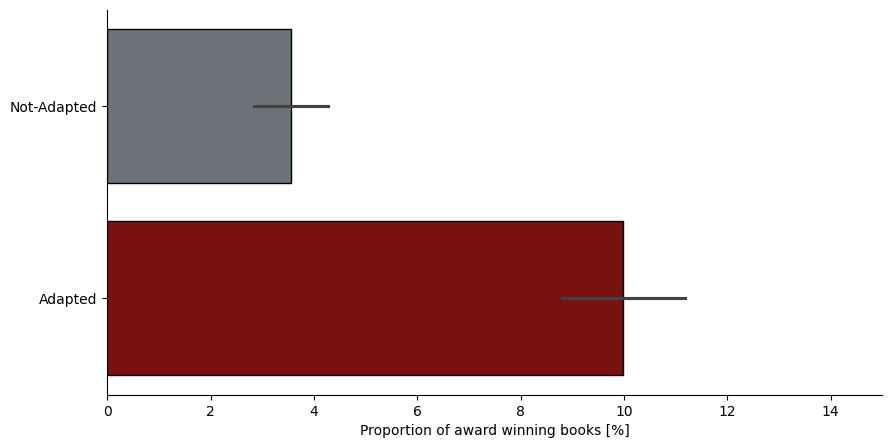
Fiction Rules the Screen
It’s no contest: 90.9% of adapted books are fiction. Why? Fiction offers emotionally resonant stories, rich visuals, and dynamic characters, making it a natural fit for film. Non-fiction, while impactful, often requires significant creative liberties to translate to the screen (e.g., “Hidden Figures”).
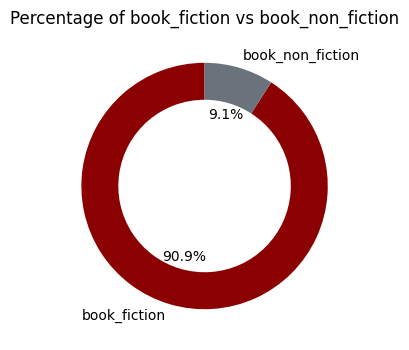
Standalone Stories Steal the Spotlight
When it comes to adaptation, standalone books reign supreme, with only 1.1% of adapted works coming from a series. While franchises like “The Hunger Games” and “The Twilight Saga” have redefined box-office success, standalone stories are easier to adapt and market, thanks to their self-contained narratives.
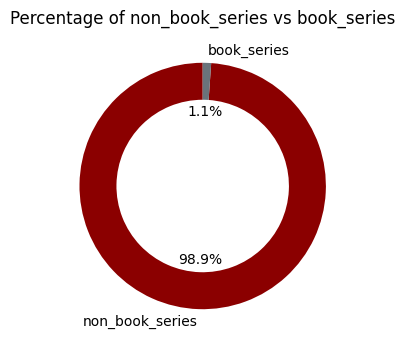
The Bigger Picture: What Hollywood Really Wants
Hollywood isn’t just looking for good books—it’s looking for adaptable stories. Here’s the recipe for cinematic success:
- Resonance: Does the story connect with audiences emotionally?
- Visual Potential: Can it translate to compelling visuals?
- Proven Popularity: Do ratings, reviews, or awards signal quality?
- Practicality: Is it manageable within budget and time constraints?
But once a book catches Hollywood’s eye, what happens next? How does a story go from print to premiere? The journey from page to screen is one of transformation, adaptation, and collaboration—a timeline full of challenges and triumphs. Stay tuned to uncover the twists and turns of this fascinating process.